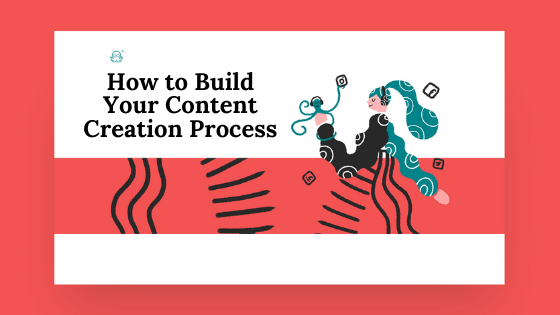Fill in the blank: “Content creation is _____”
If you’re someone who has answered fun, easy or rewarding, congratulations! You are part of the small subset of people who adore content creation.
But if you are someone who answered time-consuming, frustrating, or difficult, then we fist-bump you in solidarity. The content creation process can be time-consuming, frustrating and difficult! So if you’ve ever struggled with it, you’re not alone.
Here are some common excuses we hear about content generation:
“I don’t have the time!”
“I need to focus on sales and actually growing my business.”
“I don’t know what to write about or talk about!”
The content creation struggle is real but if you want to be successful, you have to overcome it. Because the online world runs on content.
What Is Content Creation?
Content creating involves turning an idea into something a user can either read, watch or listen to. Digital creators and businesses create content to inform, educate and entertain their followers.
Web content creation is the most popular type of content in the digital age.

Why You Need Great Content
Content is everywhere and everything. Think about how much content you’ve interacted with today. You’ve probably opened some emails, you’re reading this blog post, you’ve scanned social media. We’re interacting with content on a constant basis and you can’t afford to skip out on it.
Luckily, content is no longer relegated to being a blog or website. When we refer to content, we’re referring to blog posts, emails, social media, videos, podcasts and visual content, like infographics. With so many options, you can surely find the content medium that best fits you and your audience.
We also should note that when it comes to building a business, content works. Content marketing gets 3x more leads than paid search advertising and content marketing adopters enjoy 6x higher conversion rates than non-adopters.
You can’t afford to avoid it but you also can’t afford to just put out any old content. There’s content, literally, everywhere so if you want to stand out, you need to put out exceptional content.
[easy-tweet tweet=”You can’t afford to avoid content but you also can’t afford to just put out any old content. There’s content, literally, everywhere so if you want to stand out, you need to put out exceptional content.” user=”@meetedgar” url=”https://meetedgar.com/blog/content-creation-process”]
For solopreneurs and entrepreneurs, the struggle is real. Creating high-quality, consistent content takes valuable time and resources. And there’s no avoiding that.
You have to invest in content marketing for it to start working for you. The good news is that you’re investing in a safe bet and if you polish up your content creation process, it won’t feel as time-consuming or frustrating as you once thought.
How to Build Your Content Creation Process
Give Your Content a Job
Before you sit down at the computer to start actually creating content, let’s back up a bit and strategize. According to the DMA, lack of strategy is one of the biggest challenges of content marketing so we want to set you up for success with a strategy.
The first question to ask yourself is what is your content supposed to do for you? One of our favorite rules at MeetEdgar is “Give every piece of content a job.”
What types of jobs can your content do for you? Here are a few popular ones:
- Attracting new audience members
- Building your list
- Branding your business
- Selling your product or service
The type of job you give your content is going to depend on where you are in business or your specific goals for this year or quarter. Remember to pace yourself.
We all want more sales but if your audience is very small, it may be difficult to see the number of sales you want. You should therefore focus on creating content that will attract new audience members. (It helps to look at your yearly or quarterly goals during this exercise. It will help you prioritize your content!).
Identify Your Categories
Now that you have a baseline idea of what your content needs to do for your job, we’ve got to answer one of the bigger questions:
“What am I supposed to talk about?!”
The brainstorming and outlining months’ worth of content part of the content development process gets much easier when you embrace content categories!
Categorizing your content is the simple way to keep ideas coming, stay on brand, and be strategic with your content.
We recommend coming up with 3-6 categories of topics that are related to your business. If you need help with this, ask your audience or research your industry. Look at what your competition is talking about. Listen to the questions your audience are talking about. Stay relevant to current topics in your industry.
For example, if you are a Pilates instructor, you can create content around Pilates but your audience may also be interested in nutrition, meditation and cross-training so you could make those categories as well.
Or if you’re a business coach for new business owners, your categories might be networking, mindset, business systems, and sales.
Categorizing your content guarantees that you won’t sound repetitive but it keeps you consistent and prevents you from feeling stuck or running out of ideas.
Map Your Content Plan
By now, you’ve got the job you need your content to do and your content categories.
Next up you’ve got to figure out how often you want to create content. Remember you’re probably going to be creating different content with different jobs and you’ll need to figure out the frequency for each of those.
For example, let’s say the job of your content this quarter is to grow your audience, build your email list and brand yourself as an expert. So you need to figure out the types of content you want to create and how often you’re going to publish. You might come up with something like this:
- You’ll grow your audience through a weekly podcast.
- You’ll build your list through bi-weekly webinars.
- You’ll brand yourself an expert through monthly email newsletters.
Now you can take those content categories and brainstorm ideas around them so we can map them with each content type and the frequency to create your plan. We’ll use our Pilates instructor categories as an example. Using the categories of Pilates, Meditation, Nutrition and Cross-Training, the schedule could look something like this:
Content Ideas Brainstorm:
| Pilates | Meditation | Nutrition | Cross-Training |
|---|---|---|---|
| Beginner Tips | Guided Meditations | Nutrition Tips | How to Include Cross-Training in Your Pilates Practice |
| Exercises for Advanced Students | How to Start Meditating | Post Workout Snack Ideas | Cross-Training Ideas for Beginner Pilates Students |
| How to Stay Consistent with Your Practice | Create a Meditation Practice | Healthy Dinner Recipes | Why You Need Cross-Training for Your Practice |
| Core Exercises | The Connection Between Meditation + Pilates | How to Fuel Before Your Workout | Creating a cross-training schedule |
Then you take these ideas and map out your content!
| Week 1 | Week 2 | Week 3 | Week 4 | |
|---|---|---|---|---|
| Podcast | Pilates Tips for Beginners | Cross-Training Ideas for Beginner Pilates Students | Meditation Tips | Exercises for Advanced Pilates Students |
| Webinar | Nutrition Ideas for Your Pilates Practice | How to Include Cross-Training in Your Pilates Practice | ||
| Newsletter | Why You Need Cross-Training for Your Practice |
As you can see, we’re not repetitive but we’re staying consistent. Also, we’re increasing our ability to be able to repurpose and upcycle content. You could upcycle the content you’ve created for the Week 2 Podcast “Cross-Training Ideas for Beginner Pilates Students into the webinar “How to Include Cross-Training in Your Pilates Practice.” Just be sure you’re adding additional content into the webinar so it’s not just repeating your podcast!
Once you have your plan, your categories, the types of content and you know why you’re creating it, the actual content creation process becomes much easier.
Your Content Creation Process
Creating content is a personal thing and while we can’t tell you exactly what will work best for you, we can give you a few things that you should consider (or just straight up include).
Timing
After you’ve created your plan and you don’t have to waste time thinking about what you’re going to create, start timing yourself to see how long it actually takes you to create content. Remember to include the time it takes to research and edit your content. Do this for a few weeks so you can get a good baseline of your timing.
Outsource or Use Tools When Necessary
After you’ve tracked how much time it actually takes you, identify the areas where you can outsource to an expert or a VA or use a tool. If editing your podcast is too time-consuming, hire an editor. Or if you’re struggling with creating graphics, try using templates from a design tool, like Visme.
Goal Setting & Tracking is Part of the Process
If you’ve done the work to identify what you want your content to do for you, don’t forget to set metrics! How are you going to measure the success of your content? Pick your metrics (like website traffic, opt-ins, podcast downloads, subscriber counts, email opens, or click-through rates) and track them! It can be as easy as using an excel spreadsheet.
Promotion is Part of Creation
Don’t forget one of the most important parts of content creation: promoting it! Make content promotion part of your creation process. And if you want a tool that makes it much easier, Edgar is here for you. He can automate your posting with RSS feeds, right your status updates with suggested variations and in general, make the promotion process much easier!
Embrace Content Creation
If there’s anything we’ve learned in the social media age, it’s that content creation rules. The content creation process is part of every digital business and if you want it to stand out, you need to be intentional with what you put out there.
So start building and perfecting your content creation process. Take the time to plan ahead and stay consistent. The work will pay off!



